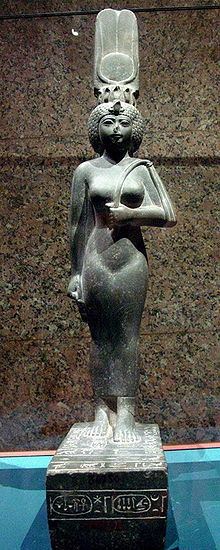Predecessor Nitocris I Place of burial Medinet Habu, Egypt Great-grandparent Psamtik I | Parents Psamtik II, Takhuit | |
 | ||
Reign 595–525 BCE (26th Dynasty) Grandparents Necho II, Khedebneithirbinet I Similar Psamtik II, Necho II, Apries, Khedebneithirbinet I | ||
Ankhnesneferibre was an ancient Egyptian princess and priestess during the 26th Dynasty, daughter of pharaoh Psamtik II and his queen Takhuit. She held the charges of Divine Adoratrice of Amun and later God's Wife of Amun for a very long time, overall between 595 and 525 BCE, thus during the reigns of Psamtik II, Apries, Amasis II and Psamtik III and until the Achamenid conquest of Egypt.
Biography
in 595 BCE Ankhnesneferibre was dispatched to Thebes in order of being adopted by the God's Wife of Amun Nitocris I as a stela from Karnak records. Ankhnesneferibre held the charge of Divine Adoratrice until Nitocris' death occurred in king Apries' regnal Year 4 (=586 BCE), after which she became the new God's Wife. Henceforth, she would govern at Thebes for several decades until 525 BCE, when Cambyses II defeated Psamtik III and conquered Egypt, putting an end to the 26th Dynasty and suppressing the charges of Divine Adoratrice of Amun and God's wife of Amun. After this date, Ankhnesneferibre disappeared from history as the last God's Wife, and the same happened to her most likely appointed successor, the Divine Adoratrice Nitocris II. As for many of her predecessors, Ankhnesneferibre's tomb is located within the temple of Medinet Habu.
For Ankhnesneferibre several attestations are known, above all a statue depicting her now exhibited at the Nubian Museum of Aswan (CG 42205), and her black basalt sarcophagus which was subsequently reused in Deir el-Medina during the Ptolemaic period by a man named Pymentu, and which is today located in the British Museum.
